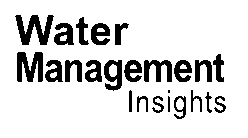In the relentless quest to ensure the safety of our tap water, a pioneering approach is making waves in the water supply industry. Dr. Barbara Tchórzewska-Cieślak, a leading researcher from the Rzeszow University of Technology in Poland, has introduced a novel method to evaluate and enhance tap water safety using a concept borrowed from industrial and information safety: Levels of Safety Integrity (LSI). This innovative strategy, detailed in a recent study, promises to revolutionize how we assess and manage risks in water supply systems, with significant implications for the energy sector.
Traditionally, water safety has been a complex puzzle, with pieces ranging from microbiological contaminants to natural disasters like floods. Tchórzewska-Cieślak’s approach, however, offers a structured framework to tackle this challenge. “We’ve taken the LSI concept and adapted it to fit the unique needs of water supply systems,” she explains. “This allows us to systematically identify hazards, assess risks, and implement protective measures.”
The methodology is a multi-step process that begins with a thorough risk assessment, focusing on priority groups such as children, the elderly, and immunocompromised individuals. This is a significant shift from conventional risk analysis, which often takes a one-size-fits-all approach. By prioritizing vulnerable populations, the method ensures that interventions are targeted and effective.
The study, published in Desalination and Water Treatment (translated from Polish as Desalination and Water Treatment), applied this methodology to real-world data, yielding intriguing results. Microbiological contamination, specifically Clostridium perfringens, was found to pose a high risk, classified as unacceptable (3-LSI) for sensitive consumers. This finding underscores the need for immediate intervention to protect vulnerable populations.
In contrast, flood-induced turbidity was categorized as controlled (2-LSI) for individual consumers. While this hazard requires continuous monitoring and mitigation strategies, it is less urgent than the microbiological threat. “This structured approach allows us to allocate resources more efficiently,” Tchórzewska-Cieślak notes. “We can focus on the most pressing issues without neglecting other potential hazards.”
The implications of this research extend beyond the water supply industry. The energy sector, which often relies on water for cooling and other processes, stands to benefit significantly. By ensuring a safe and reliable water supply, the energy sector can minimize disruptions and maintain operational efficiency. Moreover, the structured risk assessment framework can be adapted to other industries, promoting a more holistic approach to safety management.
Looking ahead, Tchórzewska-Cieślak’s work could shape the future of water safety. By providing a clear, systematic method for risk assessment and management, it paves the way for more proactive and effective water safety strategies. As water supply systems continue to face new challenges, from climate change to aging infrastructure, this approach offers a beacon of hope, guiding the industry towards a safer, more resilient future. The study, published in Desalination and Water Treatment, is a testament to the power of innovation in addressing complex, real-world problems. As we strive to protect our most precious resource, Tchórzewska-Cieślak’s work serves as a reminder that sometimes, the solution lies in looking beyond our own field, to the lessons and tools of others.
